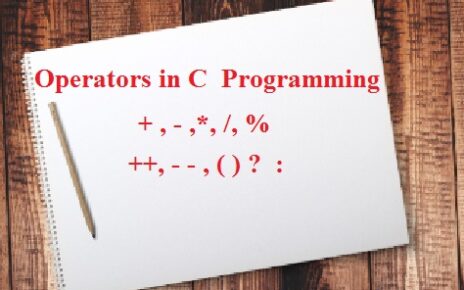Process , Thread and Cpu scheduling based questions for gate exam
(1)Consider a set of n tasks with known runtimes r1,r2,……..rn to be run on a uniprocessor machine. Which of the following processor scheduling algorithms will result in the maximum throughput ?
(A) Round-Robin (B) Shortest-Job-First
(C) Highest-Response-Ratio-Next (D) First-come-First-Served
(2) Where does the swap space resides ?
( a) RAM (b) ROM (c) DISK (d) On- Chip Cache
(3) Which of the following scheduling algorithms is non-preemptive ?
(A) Round Robin
(B) First-In First-Out
(C)Multilevel Queue Scheduling
(D)Multilevel Queue Scheduling with Feedback
(4) Which combination of the following features will suffice to characterize an OS as a multi-programmed OS ?
(a) More than one program may be loaded into main memory at the same time for execution. (B) If a program waits for certain events such as I/O, another program is immediately scheduled for execution. (C) If the execution of a program terminates, another program is immediately scheduled for execution
|
(A) A
|
(B) A and B
|
|
(C) A and C
|
(D) A, B and C
|
(5) A uni-processor computer system only has two processes, both of which alternate 10 ms CPU bursts with 90 ms I/O bursts. Both the processes were created at nearly the same time. The I/O of both processes can proceed in parallel. Which of the following scheduling strategies will result in the least CPU utilizations (over a long period of time) for this system ?
(A)First come first served scheduling
(B)Shortest remaining time first scheduling
(C)Static priority scheduling with different priorities for the two processes
(D)Round robin scheduling with a time quantum of 5 ms.
(6) Consider the following statements with respect to user-level threads and kernel-supported threads
(i)Context which is faster with kernel-supported threads
(ii)For user-level threads. a system call can block the entire process
(iii)Kernel-supported threads can be scheduled independently
(iv)User-level threads are transparent to the kernel
|
Which of the above statements are true? (A) (ii),(iii) and (iv) only
|
(B) (ii) and (iii) only
|
|
(C) (i) and (iii) only
|
(D) (i) and (ii) only
|
(7) Consider the following statements about user level threads and kernel level threads. Which one of the following statements is FALSE?
(A)Context switch time is longer for kernel level threads than for user level threads
(B)User level threads do not need any hardware support
(C)Related kernal level thread can be scheduled on different processors in a multiprocessor system
(D) Blocking one kernel level thread blocks all related threads
(8) Which of the following statements about synchronous and asynchronous I/O is NOT true?
(A) An ISR is invoked on completion of I/O in synchronous I/O but not in asynchronous I/O
(B)In both synchronous and asynchronous I/O an ISR (Interrupt Serive Routine) is invoked after completion of the I/O
(C) A process making a synchronous I/O cal waits until I/O is complete, but a process making an asynchronous I/O call does not wait for completion of the I/O
(D) In the case of synchronous I/O, the process waiting for the completion of I/O is woken up by the ISR that is invoked afterr the completion of I/O
(9) A process executes the following code for(i = 0;i < n;i ++) fork();
The total number of child processes created is
( A)n (B)2n-1 (C) 2n (D)2n+1-1
(10) Which of the following statements are true ?
I. Shortest remaining time first scheduling may cause starvation
II. Preemptive scheduling may cause starvation
III. Round robin in better than FCFS in terms of response time
(A) I only (B) I and III only (C) II and III only (D) I, II and III
(11) A process executes the code (2012)
fork ();
fork ();
fork ();
The total number of child processes created is
(A)3 (B) 4 (C) 7 (D) 8
(12) A thread is usually defined as a ‘light weight process’ because an operating system (OS) maintains smaller data structures for a thread than for a process. In relation to this, which of the followings is TRUE? (2011)
(A) On per-thread basis, the OS maintains only CPU register state
(B) The OS does not maintain a separate stack for each thread
(C) On per-thread basis, the OS does not maintain virtual memory state
(D) On per thread basis, the OS maintains only scheduling and accounting
Information





